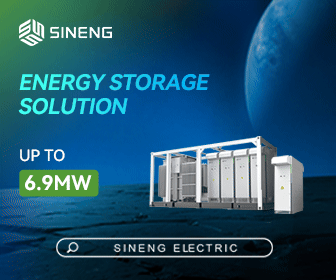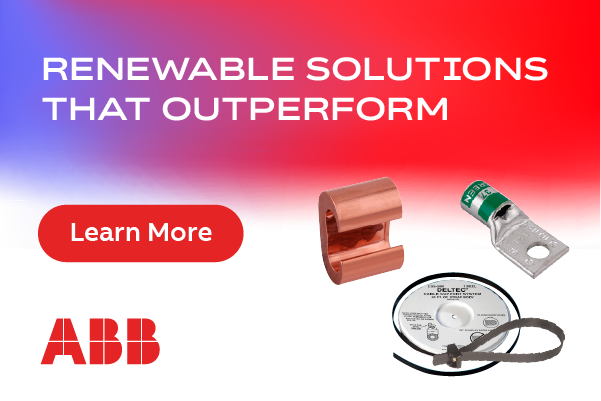FuelCell Energy Announces Solid Oxide Electrolysis and Fuel Cell Platform to Improve Control and Flexibility of Energy Investments
FuelCell Energy, Inc. (Nasdaq: FCEL) announced it is accepting orders for its solid oxide electrolyzer and solid oxide fuel cell platform. The platform will give more organizations the option to implement a flexible energy strategy in order to:
- Start their energy transition today knowing they can shift to 100% zero-carbon hydrogen in the future.
- Produce clean hydrogen for use or storage from zero-carbon renewable or nuclear power, managing the peaks and valleys of renewables and providing flexibility to nuclear energy production.
- Create energy from any combination of available sources — from renewables, hydrogen, biogas, or natural gas.
- Provide continuous power and reduce grid dependence, co-locating generation and use wherever possible.
Lowering the cost of hydrogen production
The largest factor in the cost of electrolysis-produced hydrogen is the cost of electricity. Consequently, efficiency is one of the most effective ways to lower cost. We believe FuelCell Energy’s solid oxide platform is among the most efficient available electrolysis technologies. This is expected to translate to a 20 to 30% lower cost of hydrogen compared to lower efficiency and low-temperature electrolysis. We believe our solid oxide platform offers one of the best chances of achieving the $1 USD per kg levelized cost of hydrogen targeted by the U.S. Department of Energy (DOE) by 2050. The platform operates at about 90 percent electrical efficiency (HHV), and is capable of 100 percent electrical efficiency (HHV) when paired with available excess heat from industrial or nuclear facilities. Lower temperature electrolysis technologies currently available operate at significantly lower efficiency and are not capable of utilizing the excess heat to increase efficiency.
FuelCell Energy’s electrolysis technology is under evaluation at the U.S. Department of Energy’s Idaho National Laboratory (INL), which is conducting stack tests to evaluate performance and durability. INL is the nation’s leading center for nuclear energy research and development, and also performs research in each of DOE’s strategic goal areas: energy, national security, science, and the environment.
"The stack has performed well across a broad range of conditions and unexpected events," said Micah Casteel, INL Senior Research Mechanical Design Engineer. “In addition to validation testing, our goal at INL is to push the boundaries of stack operation to find out how technology responds in non-optimal conditions to drive improvement. This technology has operated well, even in challenging test conditions."
Richard Boardman, Directorate Fellow at INL, said, “The kind of third-party independent testing we are doing at INL helps technology developers like FuelCell Energy ascertain the performance and durability of their stacks and reduce the risks associated with accelerated commercialization.”
Future-proofing energy strategies and preserving capital investments
As businesses work to build their own roadmaps to net zero, the decisions they make today need to be hydrogen-ready. FuelCell Energy’s solid oxide fuel cell can operate on a variety of fuels, including hydrogen, natural gas, and renewable biogas.
Trinity College, a longtime FuelCell Energy molten carbonate fuel cell customer, is the first organization to purchase FuelCell Energy’s 250 kW solid oxide fuel cell power-generation system. Power and heat produced from the platform will be used at Trinity’s campus in Hartford, Connecticut, to lower energy cost and enhance energy reliability and security.
“Trinity is committed to decreasing energy consumption and generating power locally to reduce greenhouse gas emissions and peak load demands on the local utility infrastructure,” said Dan Hitchell, Trinity’s Vice President for Finance and Operations. “The environmental and operational benefits of the FuelCell Energy technology enable us to ensure reliability and resiliency, while realizing our sustainability goals.”
Platform advantages
FuelCell Energy’s patented solid oxide technology is optimized for efficiency and flexibility to help customers be hydrogen-ready as the energy transition unfolds. The new platform is the result of more than 20 years of development and testing for applications including hydrogen electrolysis, long-duration hydrogen energy storage, and power generation. The solid oxide platform benefits from the decades of development and commercial production of FuelCell Energy’s carbonate power-generation platform. FuelCell Energy’s compact, lightweight solid oxide stack configuration uses highly efficient electrode-supported cells.
The FuelCell Energy solid oxide electrolyzer is:
- Efficient: Designed to produce hydrogen with the greatest known efficiency (up to 100%), requiring less electricity to produce hydrogen.
- Reliable: Will have the ability to ramp up and down to complement hydrogen demand and renewables, while maintaining high electrical efficiency.
- Modular: Quiet and sleek in its design, enabling co-location with energy sources in almost any location. For example, one module supporting a fueling station is expected to produce 600 kg of hydrogen a day.
- Scalable: The 1 MW unit will fit in the footprint of two standard shipping containers and can be replicated for multi-megawatt installations. Larger scale installations (up to gigawatt scale) will feature consolidated balance of plant equipment to reduce the footprint and cost.
- Flexible: Designed load ramp-up of 10% per minute, going from standby to full load in 10 minutes. This will let customers easily shift power supplies to the fuel cells from renewable resources like wind or solar, or simply adjust to changing consumer demand throughout the day.
“FuelCell Energy has been developing and testing solid oxide technology with support from the U.S. Department of Energy with a singular aim to provide low-cost hydrogen and power when and where it’s needed,” said Tony Leo, Chief Technology Officer and Executive Vice President. “We believe solid oxide presents the best opportunities for hydrogen-production facilities to minimize the overall cost while maximizing efficiency.”
The FuelCell Energy solid oxide fuel cell is:
- Fuel flexible and hydrogen-ready: The ability to run on various fuels, including natural gas, biogas, or 100% hydrogen, provides flexibility in the event of fuel price fluctuations and as hydrogen becomes widely available.
- Highly efficient: The superior fuel efficiency relative to combustion-based power generation can increase ROI and avoid CO2 emissions.
- Ultra-clean: The fuel cell's chemical reaction is virtually free of NOx, SOx, and particulate matter emissions.
- Easy to site: The clean emissions profile, small footprint, and quiet operation make fuel cells easy to site in urban areas.
- Resilient: The platform can be configured as part of a microgrid to provide energy security when the grid goes down.
FuelCell Energy | fuelcellenergy.com/platform/solid-oxide-fuel-cell-platforms
Idaho National Laboratory | www.inl.gov









